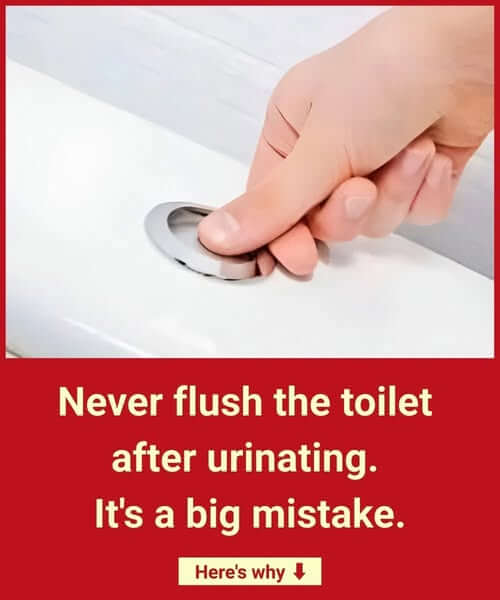Have you ever thought about how much clean water is wasted every time you flush the toilet? Each flush uses between 3 and 9 liters of treated, drinkable water. Using all that precious water just to remove a small amount of urine is like wasting something extremely valuable on a tiny task.
It might not seem like much at first, but it adds up fast. A family using the toilet ten times a day could waste up to 100 liters of water daily. Over a year, that’s more than 36,000 liters of clean water gone! In many parts of the world, people don’t even have reliable access to drinking water, making this waste even more concerning.
A simple rule many water-conscious people follow is: “If it’s yellow, we wait; if it’s brown, we flush.” This means only flushing after a bowel movement. Urine is generally clean and rarely poses immediate health risks if the toilet is cleaned regularly.
Choosing not to flush every time doesn’t mean living in a dirty bathroom. Hygiene is still crucial. Regularly cleaning the toilet and flushing once a day, or every couple of days for lightly used toilets, is enough to maintain cleanliness.
To keep odors at bay, you can add a few drops of essential oils like lemon, lavender, or eucalyptus to a diffuser or small open container near the toilet. This helps maintain a fresh-smelling bathroom naturally.
Saving water this way is simple, free, and doesn’t require any complicated changes. Instead of automatically flushing after every pee, pause and consider whether it’s necessary. Reserve the flush for solid waste or strong odors.
If you’re planning to install a new toilet, consider a dual-flush model. These have separate buttons for liquid and solid waste, saving significant amounts of water. Some modern, high-efficiency toilets use less than 3 liters per flush.
It’s also important to respect others’ habits. Not everyone may be familiar with this approach, so be mindful if you’re using shared or public bathrooms.
Key Takeaways:
- Each flush wastes 3 to 9 liters of treated drinking water.
- Urine is relatively clean, so there’s minimal risk if the toilet is maintained.
- Changing this habit is an easy, no-cost way to conserve water.
- Use dual-flush toilets or essential oils to save water and keep the bathroom fresh.
By thinking twice before every flush, you can make a big impact on water conservation and help protect this precious resource for the future.
